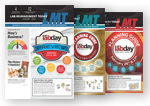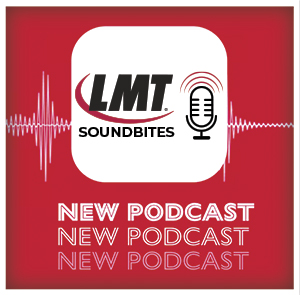Step 8a. The framework was milled out of the Origin LiveTM High Translucency full contour zirconia. It has a natural-looking, ivory translucency and a strength of 1360Mpa, strong enough for all substructure applications. The unique manufacturing process creates a consistently uniform density in the zirconia, providing distortion-free sintering that is particularly important on large cases. The framework was colored, sintered and returned to Sharp Dental Lab.
Step 6 This screen shot shows the design of the facial cutback with the diagnostic waxup scan faded in. For optimum esthetics and strength, the interior proximal contacts of the bridge portion (#3-8) were left full contour while the exterior proximal contacts (distal of #3 and #9) were cut back for porcelain contacts.
Step 2,3,4 Dr. Heather Crouch, DDS, from Elko, NV, prepped the patient’s teeth and sent the impressions, bites and prescription to Sharp Dental Laboratory, also in Elko, NV. Step 3 The laboratory completed the pre-operative and working models and sent them with the instructions for a zirconia framework—with full contour zirconia linguals and occlusals from #3 to #9—to the milling center at B&D Dental, which specializes in CAD/CAM technology (Origin® CAD/CAM) and materials research and development. B&D Dental scanned and designed the case using the Origin Intelligence Dental System and milled it with the Origin milling system. Step 4 On a case of this size and complexity, it was important to scan in as much information as possible to ensure proper and accurate design. B&D Dental scanned in the preparation arch; opposing arch; pre-operative model; and each die with #4, #5 and #7 as pontics. The scanning process for the four dies and three full-arch models, plus an articulated scan to determine bite position, took about 15 minutes. Once in the design phase, the Origin software detects the margin line and gives you the ability to make minor adjustments to the margin line from point to point, a helpful tool with cases needing minor margin adjustments. Before the design process, it had been determined that all the copings would be designed as anatomical copings; this gave B&D Dental the ability to build the full crown first before specifying a cutback designed for porcelain support. The cutback line was simply drawn to exclude the portions that needed to remain full contour while cutting back everything else for porcelain layering.
A 47-year-old male presented with an existing flipper replacing #4, #5 and #7. He hoped to get a more natural-looking, fixed prosthesis. In addition, he was unhappy with the esthetics of his crown on #6 as well as the deep overbite and rounded appearance of his front teeth. He opted for a bridge from #3 to #8 and a crown on #9 to correct these issues.
























